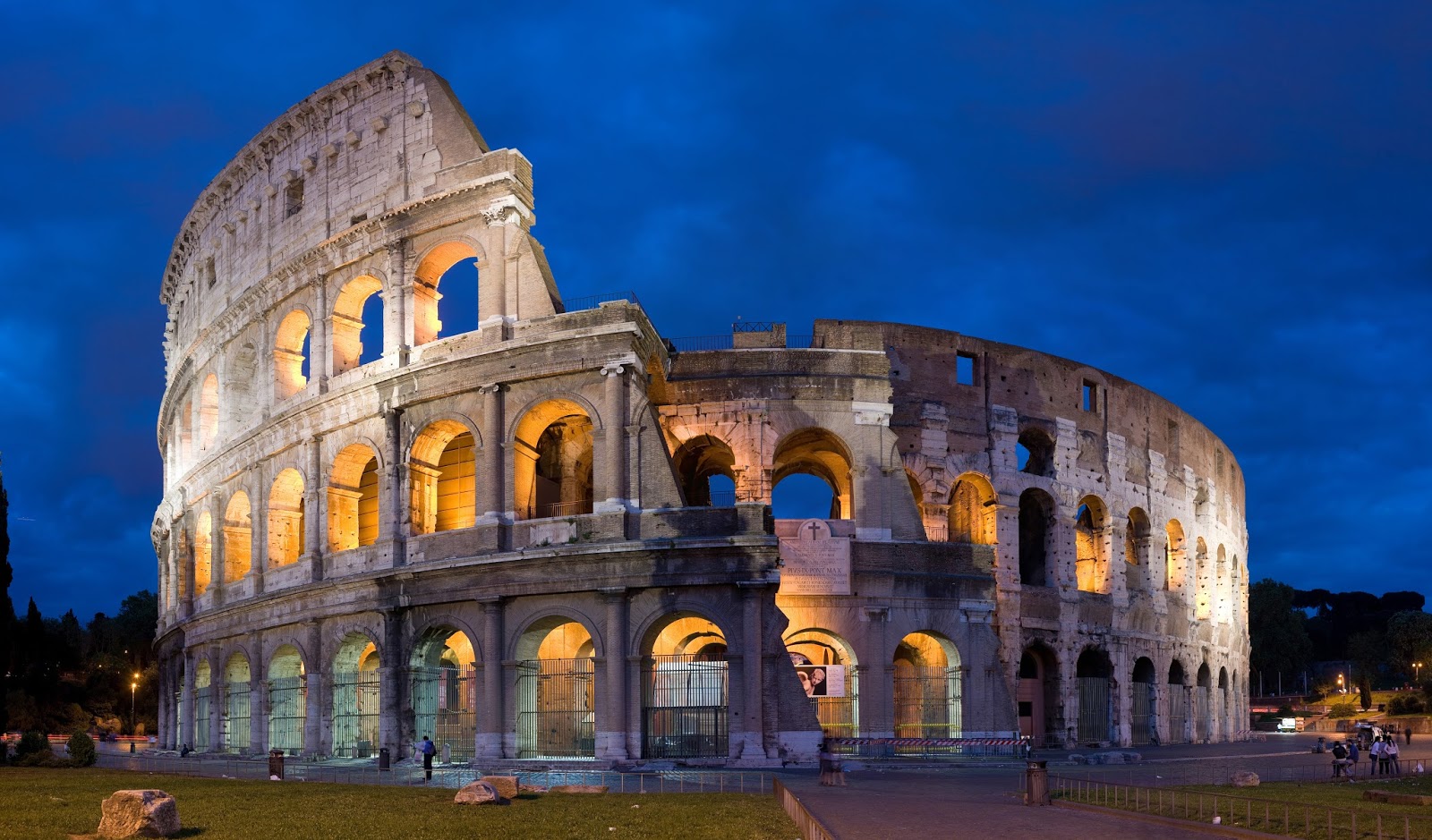The New Seven Wonders of the World: Colosseum (Italy)
The Colosseum: Icon of Ancient Rome's Grandeur and Spectacle

Introduction:
Standing as a monumental testament to the glory and grandeur of ancient Rome, the Colosseum, also known as the Flavian Amphitheatre, is an architectural marvel that continues to captivate the world with its magnificence and historical significance. This iconic structure, situated in the heart of modern-day Rome, embodies the essence of Roman civilization, serving as a symbol of power, entertainment, and engineering prowess. In this comprehensive exploration, we delve into the history, architecture, cultural significance, and enduring legacy of the Colosseum.
Historical Context:
Constructed between 70 and 80 AD under the Flavian emperors, Vespasian and Titus, the Colosseum was conceived as a grand arena for hosting public spectacles and events, including gladiatorial contests, animal hunts, mock naval battles, and theatrical performances. Built on the site of Nero's extravagant palace, the Colosseum represented a deliberate effort to appease the Roman populace and showcase the power and benevolence of the imperial regime.
Architectural Marvel:
The Colosseum's architectural design reflects the ingenuity and engineering prowess of ancient Rome. With its elliptical shape, towering tiers of seating, and intricate system of corridors and chambers, the amphitheatre could accommodate up to 50,000 spectators, making it one of the largest entertainment venues of its time. The exterior façade, adorned with majestic arches, columns, and statues, exemplifies the classical elegance and grandeur of Roman architecture.
Cultural Significance:
The Colosseum served as the epicentre of Roman entertainment and culture, attracting citizens from all walks of life to witness the extravagant spectacles and performances held within its walls. Beyond its role as a venue for blood sports and gladiatorial combat, the Colosseum also functioned as a symbol of Roman values, virtues, and social hierarchy, reflecting the ideals of honour, courage, and civic duty revered by the Roman elite.
Gladiatorial Combat and Spectacle:
One of the most enduring images associated with the Colosseum is that of gladiators engaging in mortal combat for the entertainment of the masses. Gladiatorial games, along with other events such as wild animal hunts (venations) and executions (noxii), served as a means of social control and political propaganda, reinforcing the authority and legitimacy of the Roman state while providing diversion and amusement for the populace.
Legacy and Preservation:
Despite centuries of neglect, looting, and natural disasters, including earthquakes and fires, the Colosseum has endured as a symbol of Rome's enduring legacy and cultural heritage. In modern times, the Colosseum has been the subject of extensive restoration and conservation efforts, aiming to preserve its architectural integrity and historical significance for future generations. Today, the Colosseum stands as a UNESCO World Heritage Site and one of Rome's most visited tourist attractions, drawing millions of visitors each year to marvel at its ancient splendour and immerse themselves in the rich tapestry of Roman history.
Conclusion
The Colosseum stands as a symbol of ancient Rome's grandeur, power, and cultural legacy. From its monumental architecture to its storied history of gladiatorial combat and spectacle, the Colosseum continues to captivate the imagination and inspire awe among visitors from around the world. As we stand amidst its towering ruins and contemplate its enduring significance, we are reminded of the timeless allure of Rome and the indelible imprint of its civilization on the world stage.
References
- "BBC's History of the Colosseum p. 2". Bbc.co.uk. 22 March 2011. Retrieved 16 April 2012.
- Roth, Leland M. (1993). Understanding Architecture: Its Elements, History and Meaning (First ed.). Boulder, CO: Westview Press. ISBN 978-0-06-430158-9.
- William H. Byrnes IV (Spring 2005) "Ancient Roman Munificence: The Development of the Practice and Law of Charity". Rutgers Law Review vol. 57, issue 3, pp. 1043–1110.
- "BBC's History of the Colosseum p. 1". Bbc.co.uk. 22 March 2011. Retrieved 16 April 2012.
- Baldwin, Eleonora (2012). Rome day by day. Hoboken: John Wiley & Sons Inc. p. 26. ISBN 978-1-118-16629-1.
- "The New Seven Wonders of the World". Hindustan Times. July 8, 2007. Archived from the original on September 30, 2007. Retrieved July 11, 2007.
- "Frommer's Events – Event Guide: Good Friday Procession in Rome (Palatine Hill, Italy)". Frommer's. Archived from the original on 7 January 2009. Retrieved 8 April 2008.
- "Colosseum, n.", Oxford English Dictionary Online (3rd, online ed.), 2011
- J. C. Edmondson; Steve Mason; J. B. Rives (2005). Flavius Josephus and Flavian Rome. Oxford University Press. p. 114. ISBN 978-0-19-926212-0.
- "The Colosseum – History 1". Retrieved 26 January 2008.








































